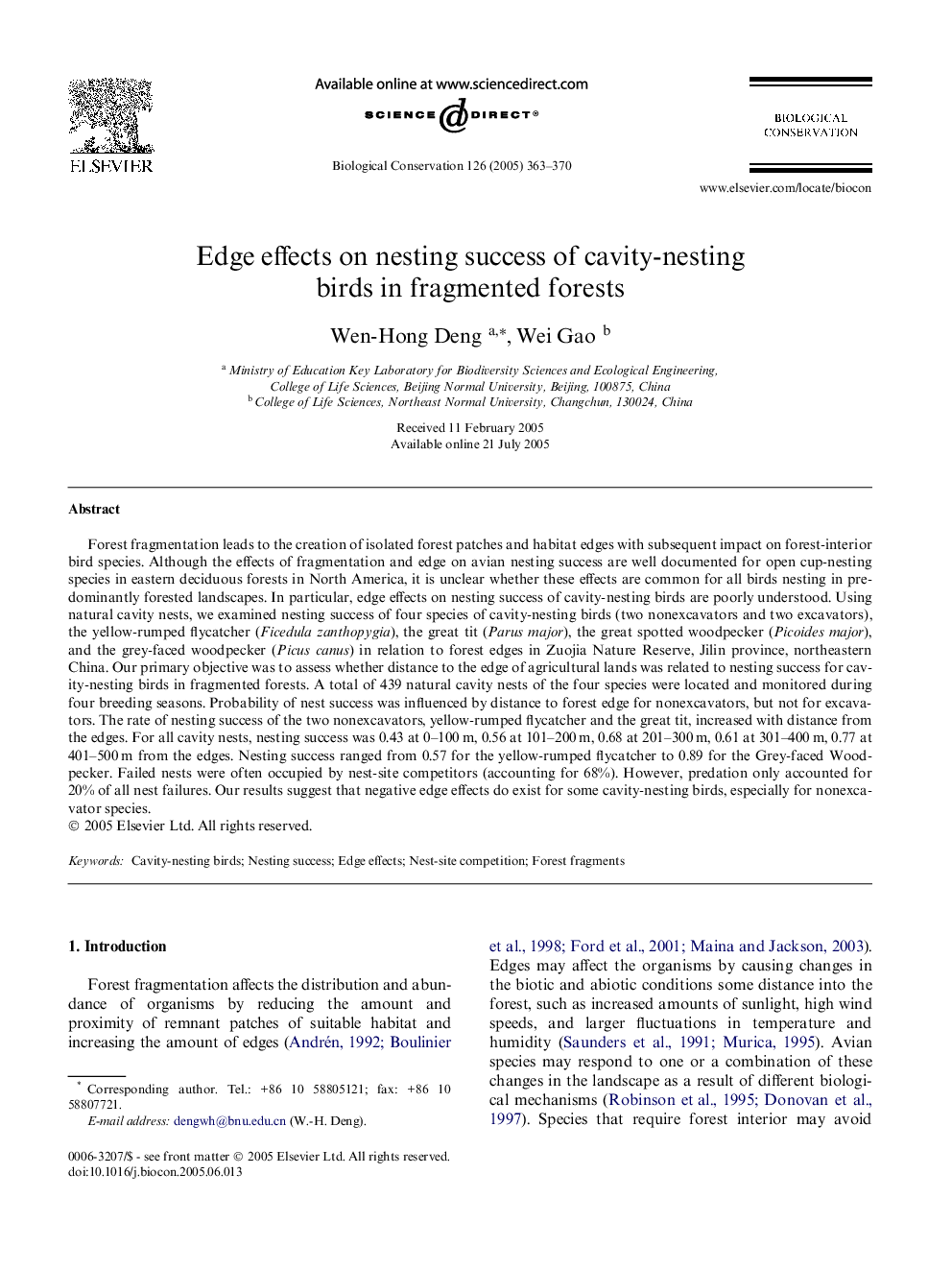| Article ID | Journal | Published Year | Pages | File Type |
|---|---|---|---|---|
| 9446013 | Biological Conservation | 2005 | 8 Pages |
Abstract
Forest fragmentation leads to the creation of isolated forest patches and habitat edges with subsequent impact on forest-interior bird species. Although the effects of fragmentation and edge on avian nesting success are well documented for open cup-nesting species in eastern deciduous forests in North America, it is unclear whether these effects are common for all birds nesting in predominantly forested landscapes. In particular, edge effects on nesting success of cavity-nesting birds are poorly understood. Using natural cavity nests, we examined nesting success of four species of cavity-nesting birds (two nonexcavators and two excavators), the yellow-rumped flycatcher (Ficedula zanthopygia), the great tit (Parus major), the great spotted woodpecker (Picoides major), and the grey-faced woodpecker (Picus canus) in relation to forest edges in Zuojia Nature Reserve, Jilin province, northeastern China. Our primary objective was to assess whether distance to the edge of agricultural lands was related to nesting success for cavity-nesting birds in fragmented forests. A total of 439 natural cavity nests of the four species were located and monitored during four breeding seasons. Probability of nest success was influenced by distance to forest edge for nonexcavators, but not for excavators. The rate of nesting success of the two nonexcavators, yellow-rumped flycatcher and the great tit, increased with distance from the edges. For all cavity nests, nesting success was 0.43 at 0-100Â m, 0.56 at 101-200Â m, 0.68 at 201-300Â m, 0.61 at 301-400Â m, 0.77 at 401-500Â m from the edges. Nesting success ranged from 0.57 for the yellow-rumped flycatcher to 0.89 for the Grey-faced Woodpecker. Failed nests were often occupied by nest-site competitors (accounting for 68%). However, predation only accounted for 20% of all nest failures. Our results suggest that negative edge effects do exist for some cavity-nesting birds, especially for nonexcavator species.
Related Topics
Life Sciences
Agricultural and Biological Sciences
Ecology, Evolution, Behavior and Systematics
Authors
Wen-Hong Deng, Wei Gao,
